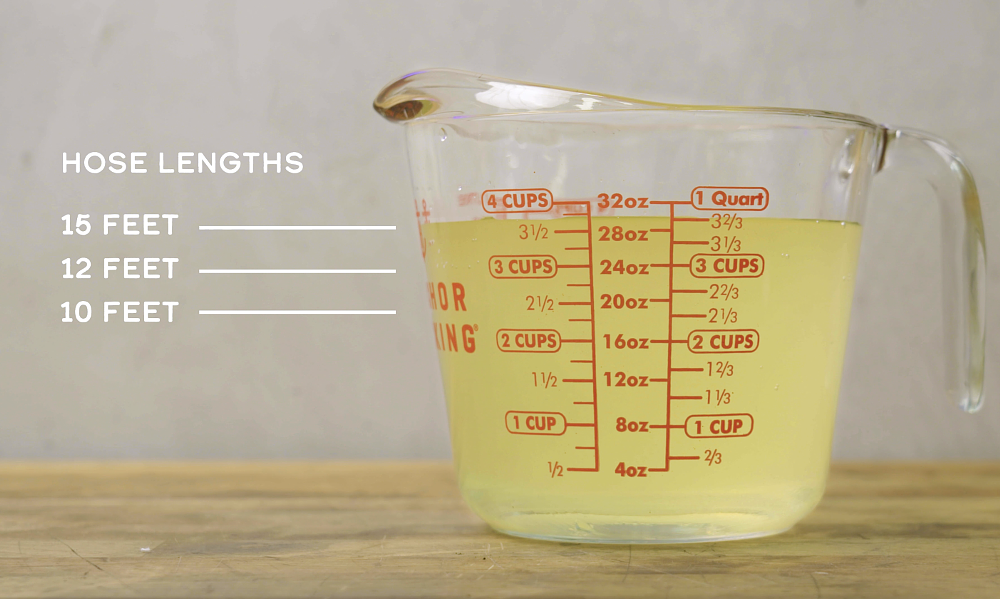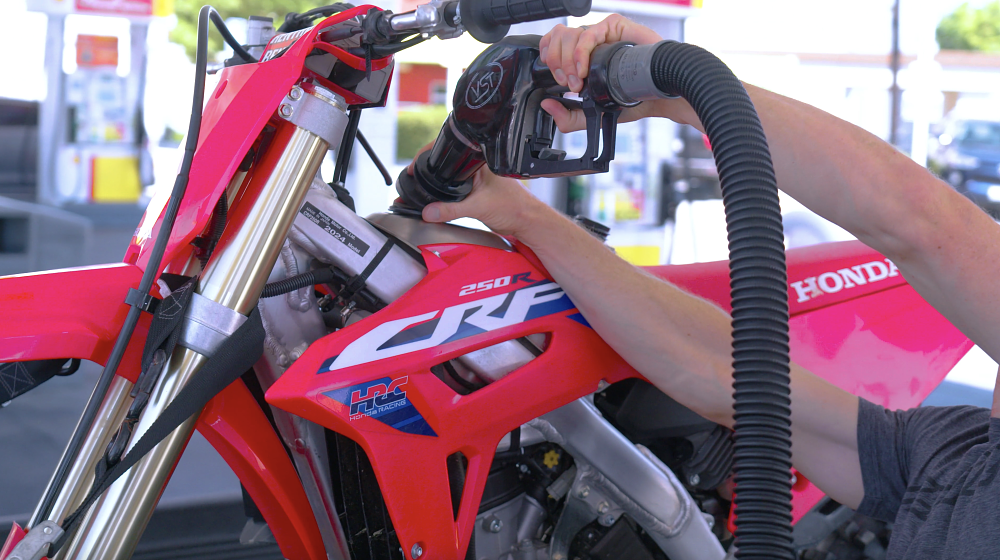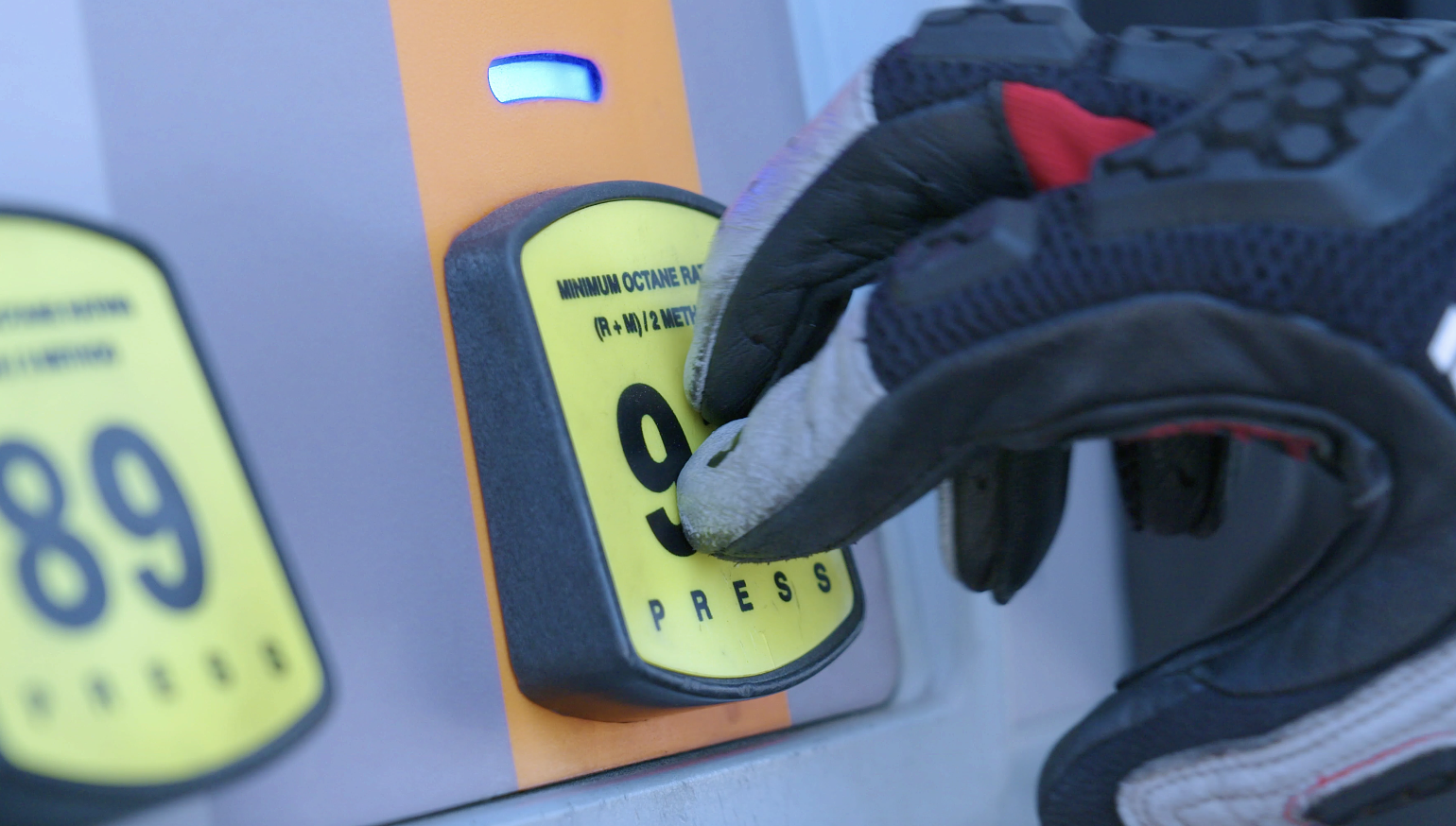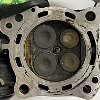You may be getting some regular gas with your purchase of premium. It’s true. Every time you squeeze the handle, a dose of whatever the last person pumped goes into your tank. How much gas is left in the hose, and does it matter to your motorcycle, or just your OCD?
Maybe you’ve never thought about the fact that you’re getting someone else’s leftovers at the pump, or maybe, like me, you just don’t care, but the whole “how much gas is in the hose” question is something I’ve heard come up a lot over the years, especially since folks started getting concerned about ethanol.
The fact is, many gas pumps have one hose that serves three grades of fuel. When you hit the button, a manifold at the top of the pump switches to pull gas from the appropriate underground storage tank. It’s a clever approach, but it means that whatever is in the hose between the manifold and the nozzle is whatever the customer before you bought, and not necessarily what you selected.
So how much residue are we talking about? Most stations have 10, 12, or rarely 15-foot hoses, with an industry standard inner diameter of five-eighths of an inch. A little number crunching yields a volume of approximately 20, 24, and 30 fluid ounces in the hose, respectively, which is about 4% to 6% of the total volume for your average street bike’s 3.7-gallon gas tank.
Does that quantity make a difference? It really doesn’t, and Big Oil isn’t paying me to say that. Even 30 ounces won’t impact the octane rating in a meaningful way, and you’re only getting fleeced — or maybe making — a few pennies on your purchase.
There are however some scenarios where it could, maybe matter, if you’re really particular.
One example I can think of is if you’re in a region where premium gas is ethanol free but the lower grades aren’t, and you’re hell bent on excluding water-absorbing corn juice from your tank, maybe because you’re about to put it away for winter storage.

Another, perhaps more reasonable scenario is a high-performance bike with a very small tank, like a motocrosser. Those engines need premium gas to run safely, and 24 or 30 ounces of regular gas can account for as much as 12 percent of the tank volume.
To be clear, even in a dirt bike’s two-gallon tank the octane rating is only going to drop a few tenths, but if you’re really, truly serious about getting the gas you want and only the gas you want, you have a few options.
One approach is to find a station with gas pumps that have separate hoses for each grade of gas. Problem solved. Another option is to linger around the gas station until someone pumps the grade you want and then swoop in after them. A less creepy strategy is to select the grade you want and prime the hose by pumping into another vehicle or a gas can, and then fill your bike. That’s an approach people use for outdoor power equipment, and I feel like that makes sense for dirt bikes and race bikes, since they usually get trailered

Finally, you could do what I do, which is… nothing. I don’t worry about the gas that gets left in the hose, and neither should you.

 Membership
Membership





